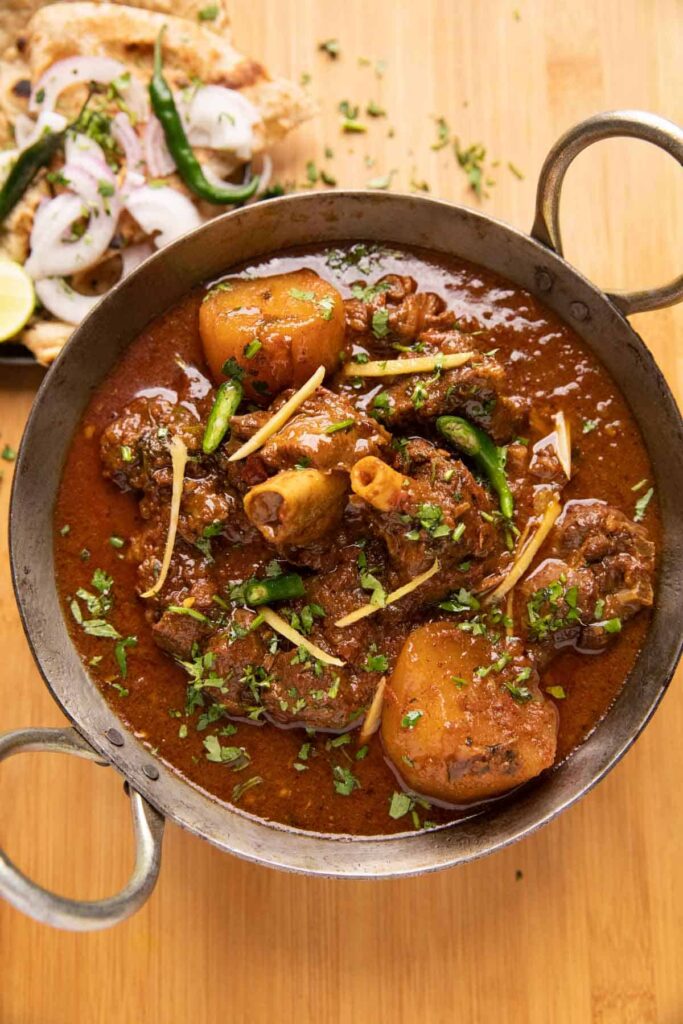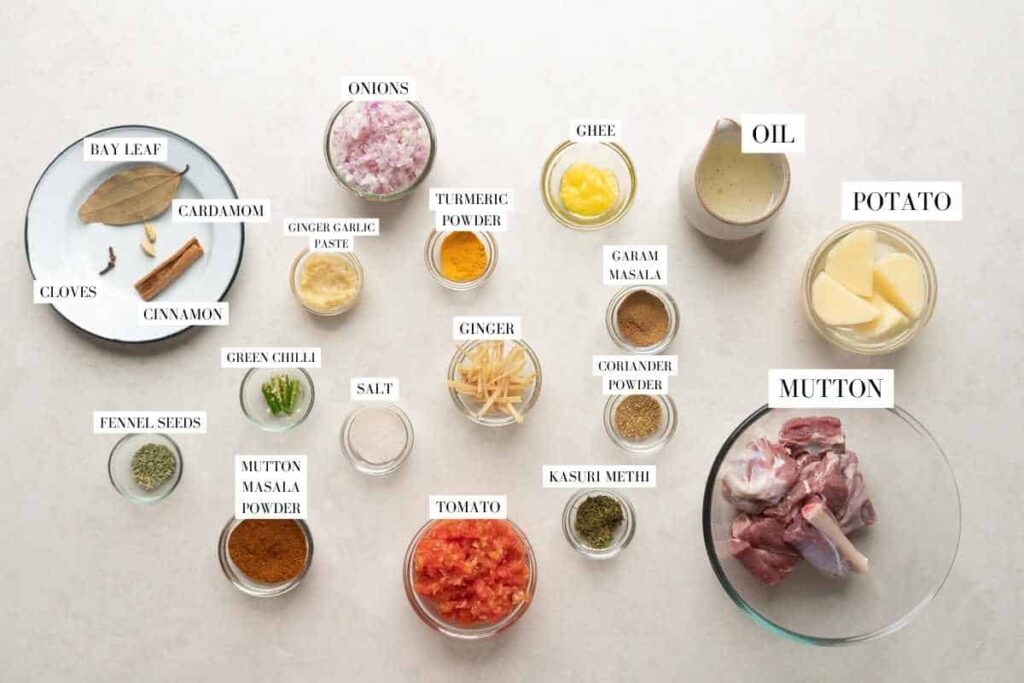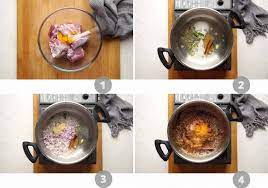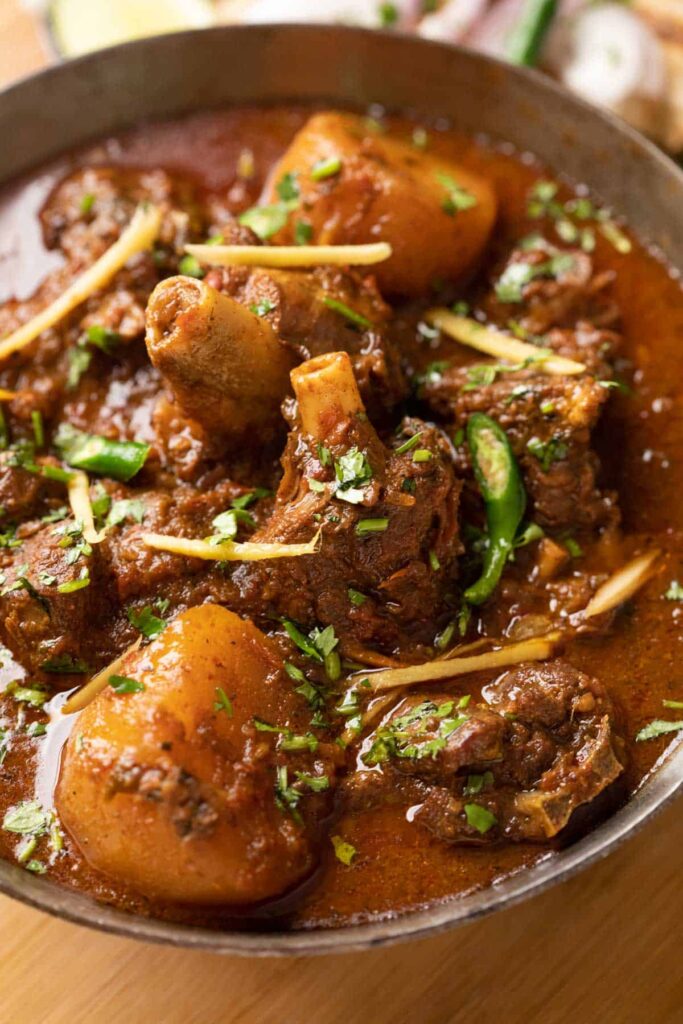Hotel Management Class Notes 36

I always thought making mutton curry is a long and laborious process that requires hours of prep and cooking time. This is one of the main reasons why I mostly reserved this dish for those leisurely Sunday lunches. Not only would I have the extra time needed to cook up a feast, but also for an afternoon nap after. I mean, is there anything better than a nap after a plate full of warm mutton curry!?
But this easy mutton curry recipe is different. What I love about this recipe is that it requires very little prep, uses simple, everyday ingredients and is ready in under an hour. If you’re wondering how, I’ve got you! I have simply replaced long hours of prep and marination with a store-bought mutton curry masala and it has been a complete game changer! This means that my lamb curry is now ready in half the original time without any compromise to the taste! The result – a heartwarming mutton curry that’s homely, spicy and a total flavour bomb!
what is mutton curry made of?
This mutton curry recipe uses onions and tomatoes as the base, which is then flavoured using different whole and ground spices. The hero ingredient of this recipe is the meat masala (different from curry powder), responsible for giving this whole dish that distinctive warm and spicy flavour.

- Mutton / Lamb: Use good quality mutton pieces, preferably with bones to make this dish a whole lot tastier.
- Turmeric:Helps eliminate that slightly gamey taste of raw mutton.
- Oil:I like using mustard oil, but any other cooking oil will work
- Spices:This recipe mainly uses whole spices to pack in a tonne of flavour. I have used fennel seeds, bayleaf, cinnamon stick, cardamom pods, cloves and green chillies. Apart from this, you’d also need some coriander powder and garam masala for an extra flavour boost.
- Meat Masala: Hands down the star ingredient of the whole dish and the reason why it comes together so quickly. I have used readymade Mutton Masala. This is different from curry powder so specifically look for meat masala, chicken masala or mutton masala.
- Onions and tomatoes: Both finely chopped and used to form the base of this curry. You can even puree the tomatoes to save yourself some time and effort.
- Potatoes: Potatoes soak up the flavour from the meat and masalas, thereby enhancing the whole dish. Not a necessary ingredient, but highly recommended.
- Kasuri methi:Dried fenugreek leaves – A commonly used ingredient in Indian curries added at the end for a hint of smokiness and to bring everything together. Even though this one’s optional too, it’s one I highly recommend using.
- Ghee or butter: Takes the flavour of the whole dish a notch higher. Do not skimp on this!
which part of mutton is good for curry?
I personally prefer using shoulder cuts of lamb or goat when making curries or stews. Some people prefer to use the legs or rump, while some recipes use a mix of mutton pieces from different parts. However, I would highly recommend using bone-in mutton or lamb pieces as they pack a tonne of flavour and taste so much better when used in stews and curries.
is goat meat and mutton the same thing?
In most countries around the world, mutton meat means lamb and is different from goat meat. But in India, mutton is referred to as both sheep and goat meat, and is often used interchangeably.
how to make mutton curry
Here’s a quick step by step to show you how to make mutton curry:

- Add turmeric and salt to the mutton or lamb and rub all over. Set aside.
- Heat oil in a pressure cooker (electric or stovetop) and saute fennel seeds, bayleaf, cinnamon, cardamom and cloves for a minute.
- Add two green chillies, onions and ginger garlic paste. Cook this for 10-12 minutes stirring occasionally till the onions are a deep brown. This is called bhuno.
- Add tomatoes, coriander powder, meat masala and salt and cook for 5 minutes till the tomatoes break down slightly.

- Add mutton, potatoes and two cups of water and put the lid on.
- If using a stovetop pressure cooker, cook on high pressure for 20-25 minutes (5-6 whistles). For the Instant Pot, cook on high pressure for 20 minutes and let the pressure release naturally or manually release the pressure after 15 minutes.
- Once the pressure is released, open the lid and switch on the flame again. Add more water if the gravy is too thick. Stir in garam masala, kasuri methi (if using), remaining green chillies, julienned ginger and ghee and simmer for another 3-4 minutes.
- Check and adjust seasoning. Let the curry rest for 15 minutes before serving.
richa’s top tips to make the best homestyle mutton curry
- Cut the mutton pieces into similar sizesto help them cook evenly.
- To make this recipe even quicker and easier you can use a food processor to chopthe onions and tomatoes. Once everything is chopped and ready, all would need to do is fry and pressure cook until done.
- Make sure to cook the onions really wellbefore adding the meat – to the point of them becoming deep brown. Bhunoing the masala is an important step as it helps to release flavours and is what gives your mutton curry that typical dark brown colour.
- If you are using frozen mutton, make sure to thaw it out properly on the kitchen counter before adding it to the pressure cooker.
why is my mutton chewy?
An important step to prevent chewy mutton is to either marinate the mutton before cooking it or allow it to cook in the pressure cooker for enough time. This process is called tenderising and is what helps your meat become soft and perfect tender.
which is the best mutton curry in india?
Mutton curry is a very popular dish in India and most states have their own versions that taste incredible. Some other mutton curry recipes you need to try are mutton keema, kosha mangsho, rogan josh and mutton korma. Some mutton recipes I personally love and keep making all the time include this easy one pot mutton kofta curry, slow cooker lamb curry, Kerala mutton stew and my all-time favourite mutton biryani!
I usually serve my mutton curries with either rice or rotis with a side of sliced onions for a complete, heartwarming meal. You can even serve yours with naan or garlic kulcha especially if you are making this for guests.



